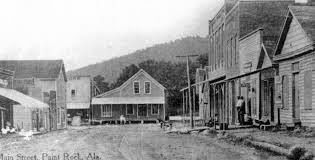 |
|
Mississippi Territory governor Robert Williams created
Madison County by executive order on December 13, 1808.
The county was named for Pres. James Madison, who was
then serving as secretary of state under Pres. Thomas
Jefferson. The area that now comprises Madison County
was held by Chickasaws and Cherokees Indians prior to
land cessions to the U.S. government and subsequent
American settlement. The first non-Indian settlers
arrived between 1802 and 1804 at Ditto's Landing on the
Tennessee River and in the area of present-day New
Market. The first sale of public lands was held on
August 9, 1809. Georgia planter LeRoy Pope purchased
acreage around Big Spring and succeeded in having it
selected as the county seat on July 5, 1810. The town
was briefly known as Twickenham, the English home of
Pope's ancestors who included English poet Alexander
Pope. This name proved unpopular, and on November 25,
1811, the Territorial Legislature changed the name to
Huntsville, in honor of John Hunt, the original settler
of Big Spring. Between 1810 and 1819, Madison County
grew rapidly in both population and size with further
public land sales, and Huntsville quickly became a
commercial center in the heart of a rich cotton-based
agricultural region. During Alabama's transition from
territory to state in the summer and fall of 1819,
Huntsville was named its temporary capital. Alabama's
first constitutional convention convened in Huntsville
on July 5, 1819, and the first session of the
legislature met there on November 9, 1819. Although the
state legislature moved the capital to Cahaba after
Alabama became a state, Huntsville continued to
flourish, serving as the cotton-trading center of the
Tennessee Valley during the 1840s and 1850s.